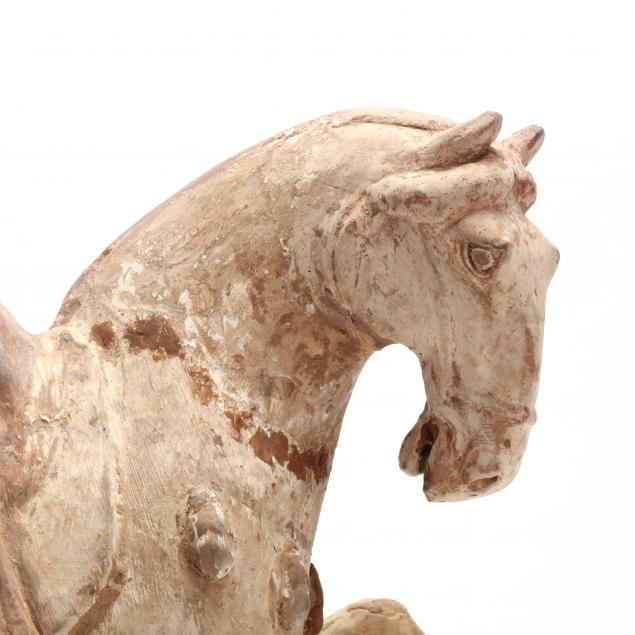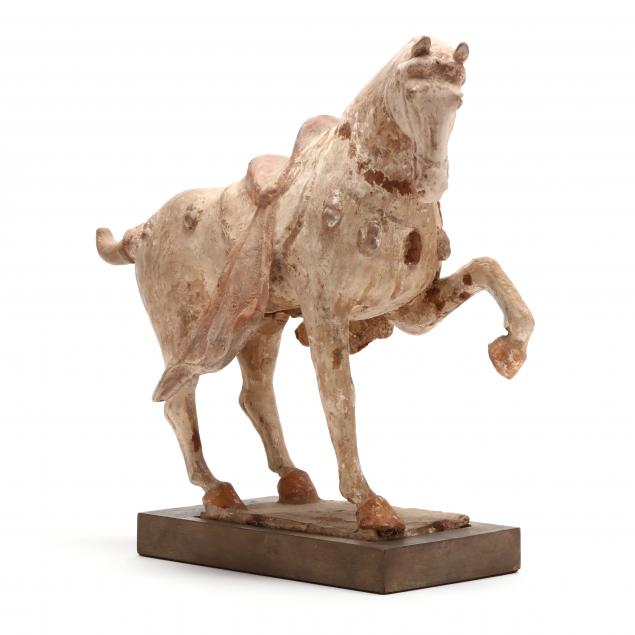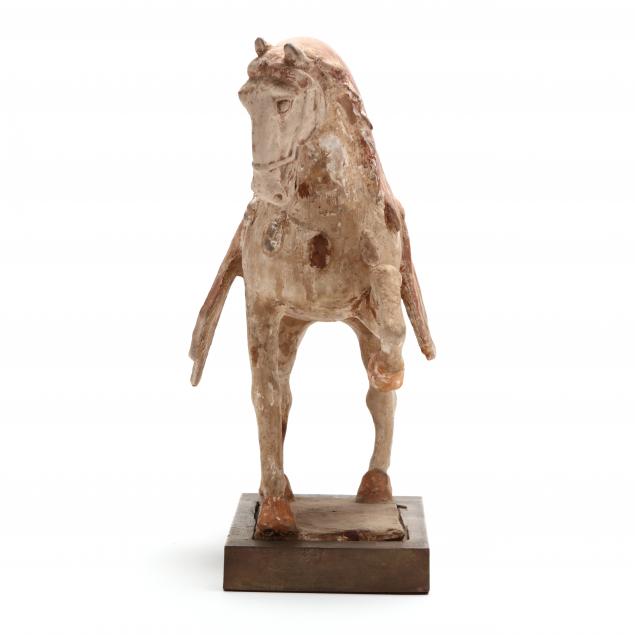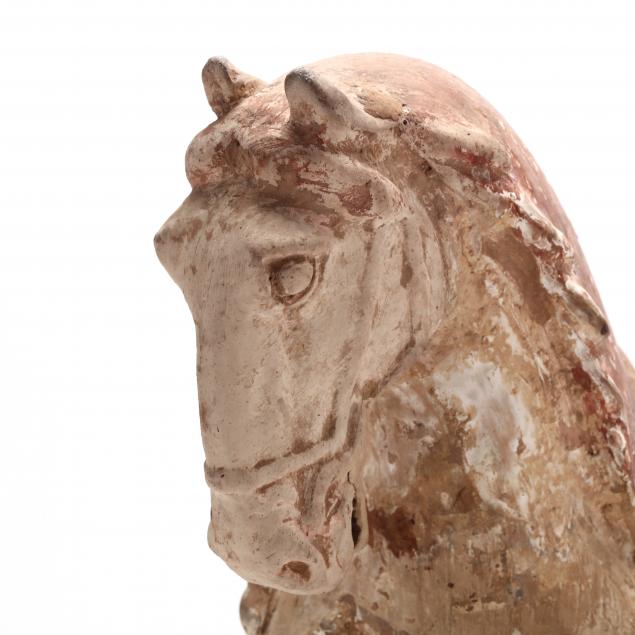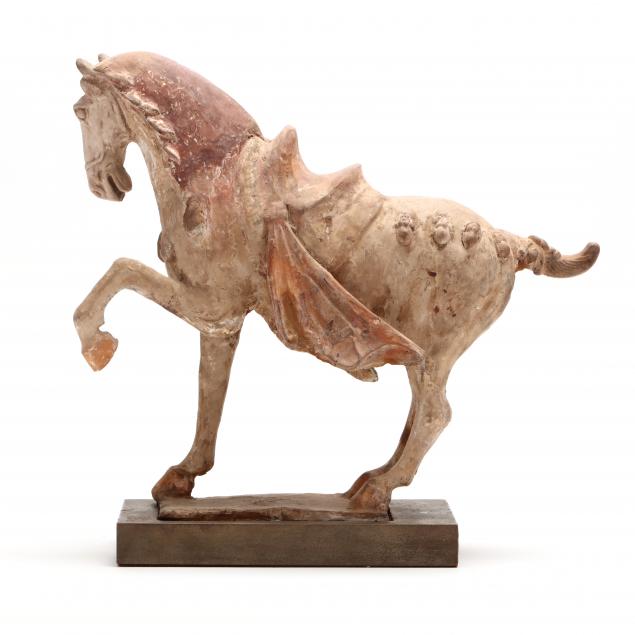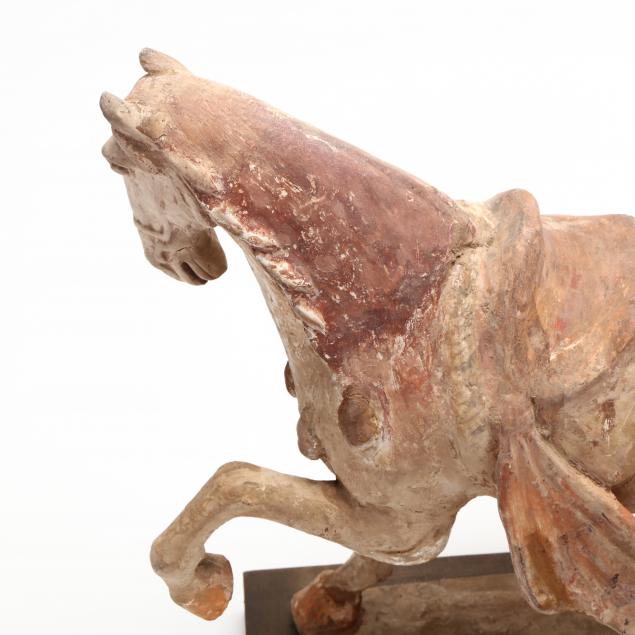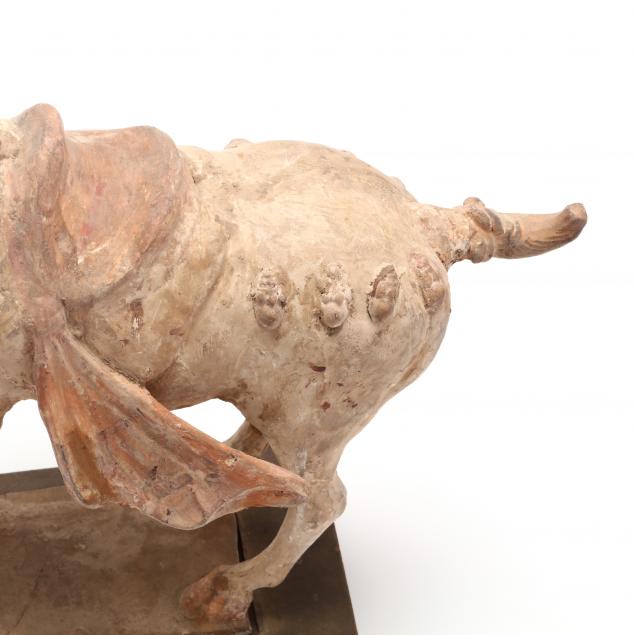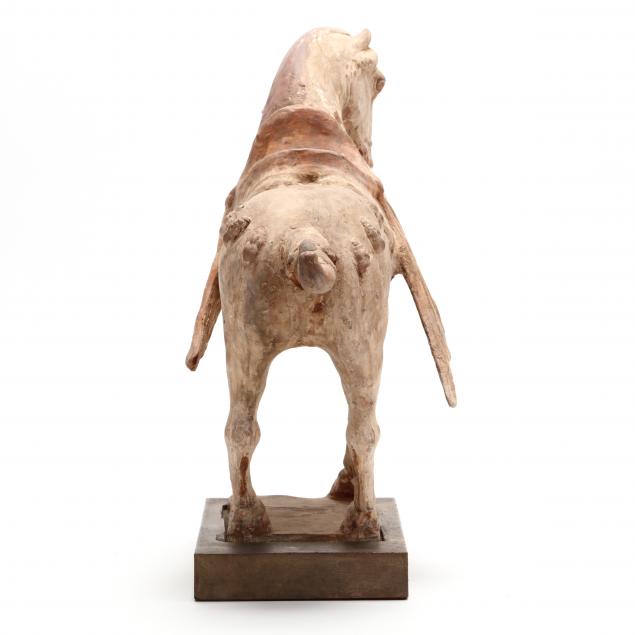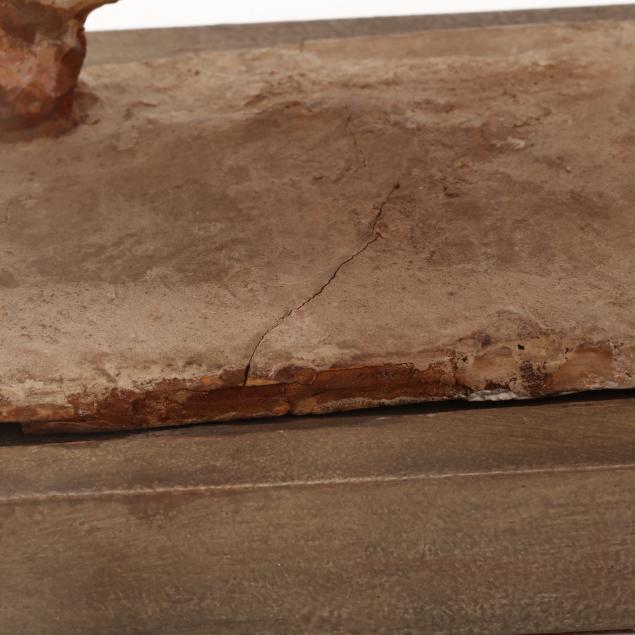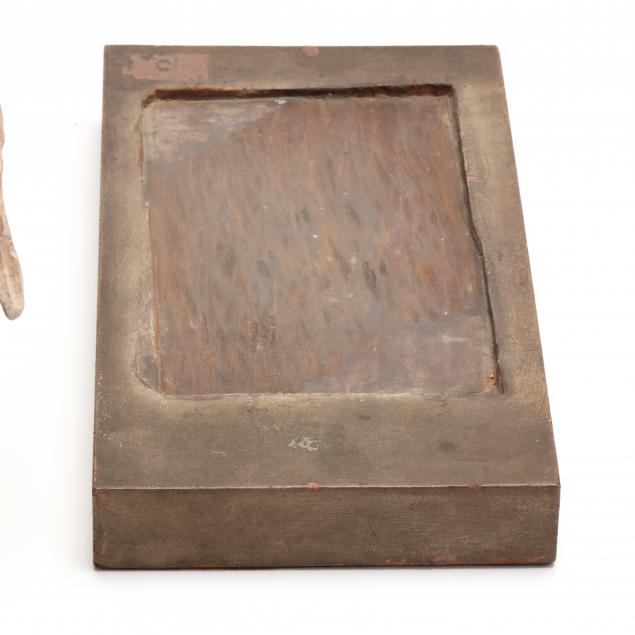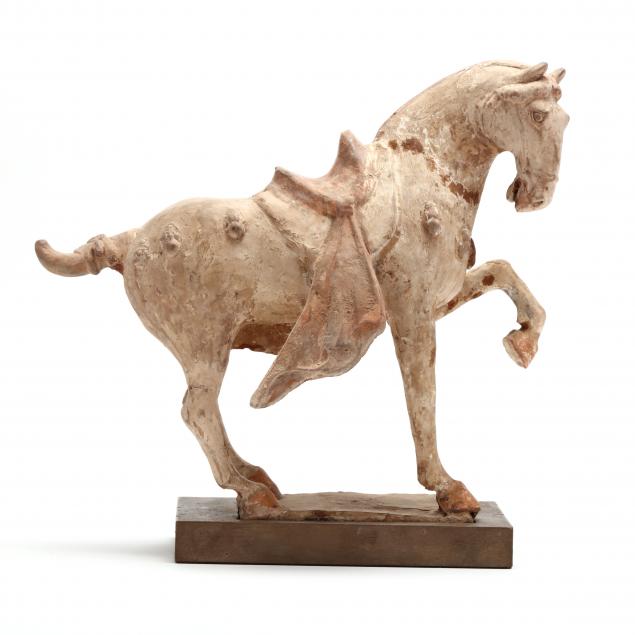
Lot 119
A Chinese Painted Prancing Horse Tomb Sculpture
Lot Details & Additional Photographs
14 3/4 x 18 x 7 1/2 in.
From the collection of Thomas English Cody (1889-1948), the great nephew of Buffalo Bill Cody, and by family descent
Sculptures of animals were created as funerary art works called mingqi or spirit objects during the Han dynasty (206 BCE- 220 CE) and Tang dynasty (618-907 AD) in China. These sculptures were placed in the tombs of wealthy aristocrats and merchants to protect and help provide for them in the afterlife. The Chinese believe that when you die, your soul splits into two, one part staying on earth and the other one entering the spiritual afterlife. Horses were one of the favorite animals of the Chinese since they symbolized wealth and power. To show their affluent stature in life families would include large horse sculptures in their tombs, prizing those that showed detail and realism or were adorned with very fine pigments or glaze.
Multiple repairs and areas of restoration.
$1,500 - 3,000
